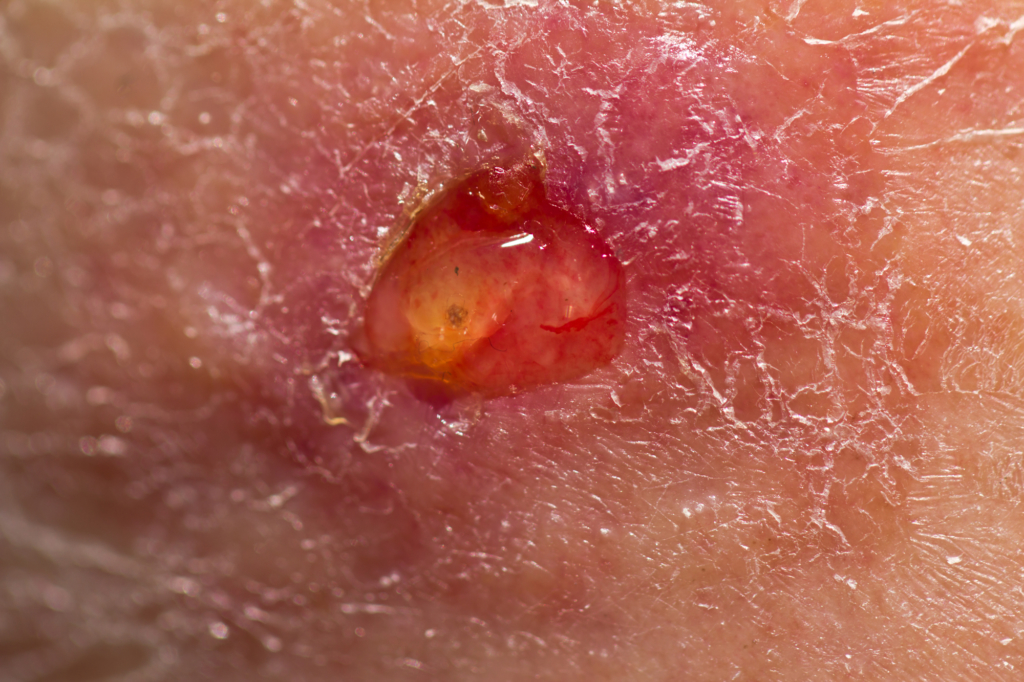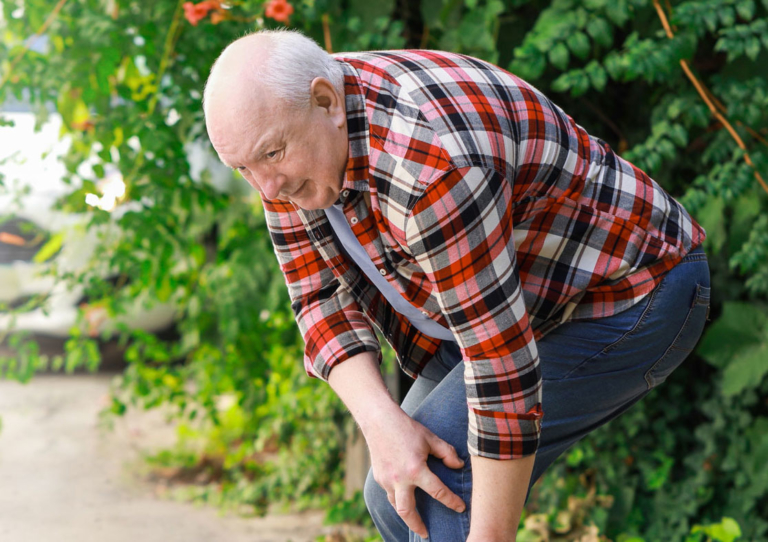Non-healing wounds are a serious sign of advanced peripheral artery disease (PAD). Still, they can also signal a different issue. If you are concerned about non-healing wounds on yourself or a loved one, it’s helpful to know what might be the underlying cause.
Wounds heal properly when there is strong blood flow to and from the wound site; therefore, a non-healing wound can be a sign of poor circulation or an underlying vascular disease. If you have a wound that just won’t heal, you should consider seeing a trusted vascular doctor at USA Vascular Centers to determine the cause of the problem.
What is a Non-Healing Wound?
A minor cut isn’t much of a problem if you have a healthy body. You might clean the dirt away from the wounded area, apply antibiotic ointment, and put a fresh bandage on it every day until it heals. After a week or so, you’ll probably forget about it entirely. Unless, of course, the wound fails to heal.
Healing is a fascinating and complex process. The minutes after a cut occurs, the blood starts to clot, forming a protective scab over the wound. Blood vessels carry oxygenated, nutrient-rich blood to the affected area. The immune system kicks in during days two through five, deploying white blood cells to prevent infection. Over the next three weeks, red blood cells work to generate new skin tissue to replace what was lost.1
When there isn’t enough blood flow to allow the body to do its job, however, wounds may not heal. If a cut or wound has not healed after five to eight weeks, it is considered a non-healing wound.
MORE QUESTIONS? TALK TO A VASCULAR SPECIALIST TODAY
Increased Risks for Developing a Non-Healing Wound
Diabetes is one of the leading risk factors for developing a non-healing wound. This is because diabetes can cause an increase in blood sugar levels, particularly if it’s not properly managed. Increased blood sugar can damage the nerves, a condition called diabetic neuropathy.
Diabetic neuropathy can cause tingling, numbness, and a reduced sense of pain in the feet and legs. Diabetes and non-healing wounds are linked, as type 2 diabetes can cause poor circulation. The combination of poor circulation and reduced pain sensations can cause you to sustain non-healing wounds without realizing they’re there.
The link between diabetes and non-healing wounds is prevalent enough that your doctor may recommend you check your feet and legs daily for wounds you may not feel. If you have diabetes and notice any signs of non-healing wounds, call your doctor as soon as possible.
Additional risks for developing a non-healing wound include cancer, heart disease, anemia, and a weakened immune system due to disease.
If a medical condition causes a person to remain wheelchair-bound, the lack of activity can increase the risk for non-healing wounds, too. Lifestyle choices can also play a role. Smoking, living a sedentary lifestyle, and eating an unhealthy diet can all contribute to non-healing wounds. A history of ulcers can also be a risk factor.
Causes of Non-Healing Wounds on Lower Legs and Feet
There are several reasons why a wound might fail to heal. If you have an autoimmune disease, such as lupus or rheumatoid arthritis, the body cannot adequately fight off infection, resulting in chronic wounds. Peripheral artery disease (PAD), a common vascular condition, puts people at risk of developing non-healing wounds because it inhibits blood flow.3
PAD is a condition that occurs when plaque accumulates on artery walls (atherosclerosis), making it more difficult for oxygen-rich blood to flow from the heart to the legs, feet, and ankles. Plaque is made up of cholesterol, fat deposits, calcium, and cellular waste. You may be at risk of PAD if you have high cholesterol, high blood pressure, smoke, are obese, or are over age 40. Lifestyle changes, such as quitting smoking and beginning an exercise plan, can reduce your risk of PAD.
Because it impedes blood flow to the lower extremities, peripheral artery disease means wounds on the legs, feet, and ankles may heal slowly or not at all. If there isn’t enough blood flowing to the injured tissue, the healing process cannot work as it should. This can lead to open sores that cause constant pain.
Non-healing wound treatment involves caring for the wound itself while also treating the underlying condition. If you are suffering from a wound that refuses to heal, consult a doctor right away. Non-healing wounds can infect the entire foot, ankle, or leg, causing tissue death and ultimately, amputation if left untreated.
Fortunately, PAD is a treatable condition. At USA Vascular Centers, our vascular doctors can perform an ankle-brachial index (ABI) test or an angiogram to diagnose PAD. After diagnosis, they can work with you to discuss the best minimally invasive procedure for your case: angioplasty, stent placement, or atherectomy.
Our doctors can perform these treatments in about two hours, sending you home to recover by the end of the day. If you’re traveling from out of town, our convenient lodging options can provide you with a comfortable place to stay before and after your treatment.
When Should I See a Doctor About an Unhealed Wound?
Regardless of what you think may be the cause of your non-healing wound, it’s important to see a doctor as soon as possible. See a doctor if you notice a foul odor coming from the wound, dark circles at the edges of the injury, and pain at the wound’s edges that gets worse over time. Any swelling or leakage is a bad sign, too.
You should see a doctor if your instincts tell you something is wrong with the wound, or it has been a while since you first noticed it. Your doctor can help determine what is causing the unhealed wound and create a treatment plan to address the underlying issue.
The treatment for a non-healing wound depends on the root cause. If your doctor determines that peripheral artery disease is the source of the non-healing wound, PAD-specific treatment will be necessary to treat the wound and prevent it from returning.
Your doctor may also recommend treatments to help stabilize the wound area. Options may include topical medication, compression stockings, getting rid of unhealthy tissue near the wound (debridement), or even hyperbaric oxygen therapy. A doctor may also give you self-care ideas to help avoid new wounds and ensure that any additional wounds are caught and treated before they become a problem.
Schedule a Consultation with USA Vascular Centers Today
A wound that has not healed within four or five weeks is an excellent reason to see a compassionate vascular doctor at USA Vascular Centers. Our doctors will determine if your veins or arteries are sufficiently transporting blood through your body and determine the vascular treatment that’s right for you.
Several medical conditions can cause poor circulation, including varicose veins, obesity, diabetes, peripheral artery disease, and more. It’s important to find out exactly why that wound is not healing.
Don’t wait any longer. Call 888.628.9389 to schedule a consultation with our vein and vascular specialists. Vascular treatments are covered by Medicare, most insurance plans, and Medicaid.
FIND A USA VASCULAR CENTER NEAR YOU
Citations
- “How wounds heal.” MedlinePlus, National Library of Medicine, U.S. Department of Health and Human Services, 12 January 2022, https://medlineplus.gov/ency/patientinstructions/000741.htm. Accessed 26 January 2022.
- “How to improve blood circulation if you have type 2 diabetes.” UCLA Health, University of California Los Angeles Medical Center, 14 January 2021, https://connect.uclahealth.org/2021/01/14/how-to-improve-blood-circulation-if-you-have-type-2-diabetes/ Accessed 26 January 2022.
- Iqbal, Arsheed, et al. “Management of Chronic Non-healing Wounds by Hirudotherapy.” National Center for Biotechnology Information, World Journal of Plastic Surgery, January 2017, https://www.ncbi.nlm.nih.gov/pmc/articles/PMC5339604/. Accessed 26 January 2022.

